After my review of the Pfizer/BioNTech SARS-CoV-2 virus vaccine, I was regularly asked if I would do the same for the Moderna vaccine. I will do that in this blog.
Regarding a discussion of the study into the efficacy and safety of the Pfizer/BioNTech vaccine, I refer you to one of my previous blogs:
https://www.janbhommel.com/post/het-pfizer-biontech-vaccin-tegen-het-sars-cov-2-virus
Comment: See here for the English translation of his blog on the Pfizer/BioNTech vaccine: What Pfizer/BioNTech isn't telling us about the new mRNA COVID-19 vaccine
The study into efficacy and safety of the Moderna vaccine against SARS-CoV-2 virus was published on December 30 in the New England Journal of Medicine (NEJM) (1). This study shows great similarities to the Pfizer/BioNTech vaccine efficacy and safety study, however there are some differences. Overall, the Moderna study makes a better impression than the Pfizer/BioNTech study, as I will discuss below.
1. Research summary:
I will commence with the abstract (summary) of the study as it contains important necessary information:
The technique that was used to produce the Moderna vaccine is the same that was used producing the Pfizer/BioNTech vaccine. A piece of messenger RNA (mRNA) encoding the spike protein of the SARS-CoV-2 virus is inserted into a fat globule made of nanoparticles. Nanoparticles come in many shapes and forms and are made among others from fats, proteins, polymers, metals, silica and carbon. The term "nano" refers to the size of the particles and says nothing about the material used. For use in medicine, nanoparticles are available that are made of polymers, proteins and fats.
In the specific case of Pfizer/BioNTech's and Moderna's mRNA vaccines, the nanoparticle is a fat globule that serves as packaging of the mRNA. This allows the mRNA to pass the barrier of the cell membrane of the body's own cells. In this way, the mRNA is delivered to the cell where it can do its job. The nanoparticle is composed of fatty acids - phospholipids - which organize themselves in the form of a sphere so that the nanoparticles are soluble in water. These phospholipids form the outer layer demonstrated in the illustration below. Another fatty acid with a positive charge binds and protects the mRNA and these are visible as light blue spheres in the illustration. A third component of the fat globule is cholesterol, which stabilizes the fat globule. A final component of these nanoparticles is the polyethylene glycol (PEG), which extends the half-life of the fat globule, making it less likely to disintegrate (3). Animal studies have actually shown that these nanoparticles have another important function as "packaging materials": they cause different types of immune system cells to travel to the injection site (5).
There are several types of polyethylene glycol, designated by a number such as PEG2000 or PEG3350. This number indicates the molecular weight of the PEG used. Polyethylene glycol PEG2000 is used in both the Pfizer/BioNTech and the Moderna vaccines. It is strongly suspected that this component has caused anaphylactic reactions in susceptible individuals. The risk of an anaphylactic reaction to vaccination with the mRNA vaccines is not known precisely, however it is estimated that for every 100,000 people that are vaccinated with the Pfizer/BioNTech vaccine, 1 will have an anaphylactic reaction. This probability is about 10x higher than it would be for classical vaccines. Therefore, the Centers for Disease Control (CDC) advise people who previously had an anaphylactic reaction to any of the components of these mRNA vaccines to not be allowed to get the vaccine. The problem, however, is that people often don't know, and in addition, at least one case of anaphylaxis was reported in a 32-year-old Alaskan woman who was not aware that she had any type of allergy.
We will now come to the mRNA in the vaccine. This is the "active" component of the vaccine. The purpose of a vaccine based on the mRNA technique is that instead of the body's own cells producing proteins, now the mRNA takes over this production of proteins for a period of time so that it is able to create the virus' spike protein, putting this on its own membrane, just as the virus has this spike protein on its membrane. The next question is which cells will take up this fat globule containing the mRNA and eventually express it. A study using rhesus monkeys shows that mainly antigen-presenting cells take up the nanoparticles and express the mRNA. This occurs at the injection site and in the lymph nodes into which the injection site drains. Antigen-presenting cells are normally immune system cells that cut foreign proteins into small pieces (peptides) and present them to the immune system on top of a small turret (MHC complex), enabling B cells and T cells to examine them in order to assess whether they are the body's own or foreign pieces of protein. If the B and T cells recognize these peptides as foreign to the body, the immune system is activated. To what extent other body cells take up the mRNA vaccine as well and possibly express the mRNA is not well known, but animal research with macaques indicates uptake and expression in muscle cells around the injection site.
Several promotional materials claim that the mRNA in Pfizer/BioNTech's vaccine is identical to the body's own mRNA, and could for that reason alone have no adverse effects. That is not entirely accurate. The mRNA in both vaccines is modified in various ways so that it is more stable and less likely to degrade. Moreover, the different codons - the sequence of three consecutive building blocks in the mRNA - are optimized to maximize the ability of cells to produce the spike protein. In this way, the spike protein is able to express for a longer duration in the body's own cells while producing more spike protein. The aim is to elicit a maximum immune response. As far as is known there have been no adverse effects of these mRNA modifications in humans, however, experience with these techniques in humans is still very limited. In the overview below several strategies are described which can be applied to allow the depreciation of the vaccine mRNA to run as efficiently as possible (Box 1).
The abstract further explains that it is about a 'prefusion stabilized full-length S-protein'. The term prefusion refers to the shape of the spike protein. When the spike protein of the SARS-CoV-2 virus binds to the ACE2 receptor of human cells, it experiences a change of its shape. Obviously, the virus must be recognized by the immune system before it binds to our cells so the genetic code of the vaccine's mRNA has been modified to prevent the spike protein from changing shape (6).
What also appears from the abstract is that in the Moderna study, as in the Pfizer/BioNTech vaccine study, the absolute numbers of people who developed COVID-19 after vaccination were low; only 185 in the placebo group while 11 in the vaccinated group. This would be of significance according to the statistical techniques used, however, in absolute terms, this only involves 1.2% of the placebo group participants. The number of people in the vaccinated group and in the placebo group who were suspected of having COVID-19 but did not receive this diagnosis because the RT-PCR result was negative, cannot be determined from the article. In comparison, the Pfizer/BioNTech study showed a multitude of people who were suspected to have been infected with COVID-19 but whose RT-PCR test results were negative. Whether these people had contracted another infection, and if so, which pathogens were involved, is not known (7). Therefore, the RT-PCR test results on whether or not people were diagnosed with COVID-19 must have been the deciding factor in both the Pfizer/BioNTech study and the Moderna study. A positive RT-PCR test result was sufficient for a diagnosis.
Although the exact sensitivity of the RT-PCR test for SARS-CoV-2 virus in different research settings is still not known, according to the literature it is estimated to be around 60-70% (14). Furthermore, progressive insights have made it clear that while the time frame during which people test positive for a viral culture - as the gold standard for the detection of intact virus particles - is limited to 9-10 days, the period during which the RT-PCR test continues to generate positive results is much longer. In extreme cases, the RT-PCR test could continue to generate positive results up to 83 days after the onset of symptoms, while on average the test continued to generate positive results three weeks after the onset of symptoms (8). To what extent these suboptimal test characteristics of the RT-PCR test contributed to any misclassification of COVID-19 cannot be determined from the study. Normally, such misclassification would affect both groups equally, were it not for the fact that people in the vaccinated group were able to make an educated guess as to which group they belonged due to the occurrence of (not infrequently significant) adverse events. It is possible that the reporting of complaints differed between the vaccinated group and the placebo group leading to a distortion of the results.
Another possibility is that people had complaints and symptoms suspicious for COVID19 while also having positive RT-PCR test results, but in reality had another underlying infection. As far as can be determined from both the article and the study protocol, these people were not subjected to a PCR test on a 'respiratory panel', testing for other possible viral respiratory infections, therefore this remains a possibility.
2. Methods:
As in Pfizer/BioNTech's case, also Moderna itself was primarily responsible for designing the study, choosing the study sites, monitoring the study, analyzing the data and writing the final article. However, this was done in collaboration with the Biomedical Advanced Research and Development Authority of the U.S. Department of Health & Human Services (9) and the National Institute of Allergy and Infectious Diseases of the National Institute of Health (10). In my opinion, this may be the reason why the design of this study was more accurate in comparison to the Pfizer/BioNTech vaccine study.
An overview of the study provides us with the following details: A total of 15,210 people were assigned to the placebo group of which 14,617 people ended up getting both shots. 15,208 people were assigned to the group that was to be vaccinated and ultimately 14,711 people in this group received the prescribed two doses of the vaccine. Throughout the study, the groups remained well balanced: in the placebo group, 572 people tested positive for the SARS-CoV-2 virus at the time of the first shot or had no relevant data available, while 631people in the vaccinated group did. In the placebo group there were 154 people who had not received the 2nd shot at the time of the interim analysis versus 138 in the vaccinated group. Furthermore, 69 people in the placebo group were found to be infected with the SARS-CoV-2 virus between the 1st and the 2nd shot; 45 people in the vaccinated group. Note that the interval between the two jabs in this study was four weeks, whereas it was two weeks in the Pfizer/BioNTech study. This can be an important difference in a pandemic where the number of infections is high and a reasonable chance exists that people will become infected in these intervening four weeks.
Even though the predetermined primary end point of this study was statistically achieved at the time of the first interim analysis, the results of which are described in this study, the total duration of the study is, as is the case for the Pfizer/BioNTech study, basically two years. The median duration of follow-up for participants at the time of this interim analysis was 64 days, with a minimum follow-up of 0 days and the maximum follow-up of 97 days. For adolescent participants in this study - people who have a life expectancy of at least 60 or 70 years - this is a very short period of time to properly assess any adverse long-term effects, especially considering that it involves a vaccination technique which has never been used before on such a large scale.
As mentioned before, although the primary end point had statistical significance, the analysis is based on only 196 people diagnosed with COVID-19 of whom 185 cases with COVID-19 were found in the placebo group while 11 people were in the vaccinated group. The prespecified statistical primary end point was based on 151 people with COVID-19, so the study would have a power of 90% to demonstrate a 60% reduction in the likelihood of experiencing COVID-19 in the vaccinated group compared to the placebo group. In fact, the power of a study is the probability that the study will show an effect if that effect is actually there. Based on these 196 people with COVID-19, the study reports a much greater reduction in the likelihood of going through COVID-19 in the vaccinated group, on the order of 95%. Again, this is a relative, and not an absolute, risk reduction, analogous to the reported 90% risk reduction in the Pfizer/BioNTech study.
3. Inclusion criteria for the study:
Obviously, it's important to know who was allowed to participate in the study and, even more importantly, who was not. I derive these inclusion criteria for this study from the study's protocol (11).
4. Exclusion criteria for this study:
It is more important to know who was excluded from participating in the study:
Below, I will list the main groups:
1. Pregnant and breastfeeding women.
2. People with an 'allergic constitution', defined on the one hand as people with a history of anaphylactic reaction. However, even if people developed urticaria (hives) as an allergic reaction, this was enough to be excluded from this study.
3. People with an "immune deficiency", whereby even experiencing recurrent infections was already sufficient reason to be excluded from the study. People with anatomical or functional asplenia (people in whom the spleen no longer works or is no longer present) were also excluded from participation in the study.
4. People taking systemic immunosuppressants (drugs that suppress the functioning of the immune system) and people with autoimmune disorders who were taking immune-modulating drugs (drugs that alter the functioning of the immune system), were not allowed to participate in the study. In this respect, one can think of people with rheumatoid arthritis or multiple sclerosis who use "biologicals" such as rituximab (MabThera)or natalizumab (Tysabri). Furthermore, people with cancer who had been treated with chemotherapy were also excluded.
From the researchers' perspective it is quite understandable that these patient categories were excluded from the study in order to minimize the risk of insufficient efficacy or serious side effects of the vaccine, but nevertheless, this has consequences relating to the usability of the vaccine in these people. Neither the efficacy nor the safety of this vaccine can be reliably assessed for these people.
5. Characteristics of the participants:
Study participants are then stratified (divided) into three groups:
- People between the ages of 18 and 65 without an increased risk of severely progressing COVID-19.
- People between the ages of 18 and 65 with an increased risk of severely progressing COVID-19.
- People aged 65 years and older.
The characteristics of the study participants can be found in the supplementary appendix to this article (12). The age range in the different groups really makes me frown, as in my opinion it should not be too hard to closely check people's IDs to see how old they are.
Furthermore, there are another number of characteristics that are important to assess the profile of the participants in this study.
- The distribution of the age categories of the participants of 65 years and older.
- The frequency and severity of comorbidities (underlying conditions) in the age group of 65 years and older.
- How many of these people live in a nursing home.
A minority of the participants were 65 years or older, totaling 24.8% of the study group. Participants aged 65 to 74 years constituted 20.2% of the research group while 4.3% of the participants fell into the 75 to 84 years age group. Only 0.3% of the research group was formed by people aged 85 and older. Thus, more than 75% of the participants are people who have a relatively low risk of a severe course of COVID-19, and whose overall Infection Fatality Rate lies well below 1% (13) and who are likely to have an intact immune system. Furthermore, only 62 study participants resided in a nursing home or assisted care facility, totaling 0.2% of the number of participants.
When the degree of comorbidity is considered in the over-65s who participated in the study (underlying conditions - outlined in red), I think it is fair to say that this was not a random sample of people aged 65 and over. It was the relatively healthy over-65s who participated in the study and they are not representative of this age group in the Dutch population. In any case, the group of people over 65 in this study are not in any way representative of the vulnerable group of residents in nursing homes and care homes who are now all being vaccinated with this Moderna vaccine. These are often elderly people with multiple underlying conditions, such as cognitive impairment and dementia, an increased risk of falling down, severe osteoporosis, renal dysfunction, cardiovascular disease, and whatnot. The fact that the Health Council states that the Moderna vaccine is highly effective in the elderly, based on the results of this study in relatively healthy people over 65, cannot be translated one-to-one to this category of people. I will come back to this when the results of the study are available.
6. The outcome measure:
The primary outcome measure to evaluate the efficacy of the Moderna vaccine was the number of people diagnosed with COVID-19 in the two groups. As with the Pfizer/BioNTech study, it is very important to consider Moderna's definition of the COVID-19 diagnosis. In my opinion, the definition used by the Moderna researchers is preferable to the one used in the Pfizer/BioNTech study. Pfizer/BioNTech required just one symptom (in combination with a positive result on the RT-PCR test), but in the Moderna study at least three symptoms were required, or two symptoms in combination with an abnormal X-thorax. This imposes a wider range of requirements in order to get to a diagnosis of COVID-19, and likely involves more clinically relevant manifestations of the disease. Although the Moderna study also involves subjective symptoms which are not easily quantified, this study is more conservative in establishing a COVID-19 diagnosis, so in my opinion it is more likely that these people were indeed clinically ill.
In order to arrive at a COVID-19 diagnosis, at least two of the following symptoms had to be present: fever >38 degrees Celsius, chills, muscle aches, headache, sore throat or newly developed loss of smell or taste. In addition, there had to be one of the following symptoms: shortness of breath, difficulty breathing, coughing, or there had to be an abnormal chest radiograph, or a clinical suspicion of pneumonia. Although the definition of COVID-19 which was used in this study is, in my opinion, more conservative and relevant to the daily practice compared to the definition used in the Pfizer/BioNTech study, this study largely deals with subjective symptoms as well, which range from particularly mild to severe. So also in Moderna's case, it is debatable how relevant the outcome measure 'COVID-19' is, if a large proportion of the participants has an influenza-type presentation from which they recover smoothly and without any problems, as is the case for the vast majority of the population (13).
7. The results:
With respect to these observations, it would appear that Moderna's mRNA vaccine works well, even though the absolute risk reduction is still low, caused by the fact that there were very few cases of COVID-19 in absolute terms:
From the moment of administration of the second shot, we notice how the line representing the placebo group in the graph diverges from the one of the vaccinated group. We should however be aware that this represents the results in a favorable way as this graph does not show the side effects of the vaccination itself, which have not been included in the graph. In order to be able to objectively evaluate, however, one must directly compare the complaints and symptoms caused by the vaccination to the complaints and symptoms caused by the infection itself. One should not assume in advance that the side effects of the vaccine are mild and transient while the possible complaints and symptoms of COVID-19 are not. Incidentally, this fact is less disturbing in this study than in the Pfizer/BioNTech study because, as already mentioned, the definition of COVID-19 in the Moderna study was more conservative, and the people who went through COVID-19 were probably sicker, on average, than the subjects in the Pfizer/BioNTech study.
Moreover, in the boxes outlined in red below the graph, it can be observed that the number of persons "at-risk" for COVID-19 is decreasing very rapidly with an increase of the duration of the study. This is directly due to the short duration of the study. There are simply still very few people who have been followed for a longer period of time, which obviously is to be expected for an interim analysis after two months.
As the study demonstrates, the efficacy of the vaccine equals a 95% relative reduction of going through COVID-19. The absolute risk reduction, which necessarily must be much less impressive given the short duration of the study, is not mentioned in the article but can be calculated from the available data. The incidence of COVID-19 per 1000 person-years is 56.5 for the placebo group and 3.3 for the vaccinated group. Therefore, the absolute risk reduction is 56.5-3.3 = 53.2 per 1000 person-years. However, converted to the absolute risk reduction for the study duration of two months, this is only 0.053/6 x 100 = 0.88%. In case of unchanged efficacy, this absolute risk reduction is likely to increase substantially, but whether the efficacy of the vaccine remains unchanged over time is an open question to date.
If one subsequently examines the efficacy in the various subgroups, it appears that Moderna's vaccine is effective for all predefined groups. Nevertheless, there are distinct differences. Efficacy is consistently lower in the over-65 group, regardless of whether they have underlying conditions or not. This is a well-known phenomenon and is due to the normal aging of the immune system. Influenza vaccination is also known to have a significant decrease in vaccine efficacy with increasing age (15). Efficacy also seems to be somewhat lower in people with underlying diseases. If one takes into account that, compared to the residents of nursing homes and care homes in the Netherlands, the study concerns an unrepresentative and relatively healthy group of people over 65, I fear that the actual efficacy among very old people and people with multiple underlying conditions may well be considerably lower.
The most relevant question obviously concerns the extent to which Moderna's vaccine protects against severe COVID-19. And naturally, once again, it is important to know how severe COVID-19 was defined in the study.
One could observe that also the definition for "severe COVID-19" is somewhat broad, nevertheless it concerns objective clinical measures that are also widely used in daily practice to estimate the severity of a disease.
According to this definition, there were 30 people with severe COVID-19 who were all part of the placebo group, and not the vaccinated group. This is a relevant and convincing result, and although these are still low numbers in absolute terms, it calls for cautious optimism.
Furthermore, it is of extreme relevance to know whether there are any distinctive characteristics of the people who experience severe COVID-19. Once more, we can consult the appendix of this article:
Severe COVID-19 was defined somewhat broadly as is evidenced by this table showing that only 2 out of these 30 people had to be admitted to intensive care. Moreover, only one of them died. Furthermore, only 6 out of the 30 people were diagnosed with respiratory insufficiency, which apparently in 4 people was so mild that invasive ventilation was not necessary. Also, 28 out of these 30 people had an oxygen saturation lower than 93%, something that occurs relatively quickly in chronic lung patients, and is also not the most relevant measure for reliably estimating the severity of the disease.
It is important to note that 10 of the 30 people belonged to the group of people over 65, which is not a major deviation from the percentage of people over 65 (24.8%) in the study, and is once more an indication that this is a relatively healthy group of people over 65, given that the Infection Fatality Rate rises sharply over the age of 65 (13). Perhaps even more important is that 20 of the 30 people with severe COVID-19 had an underlying condition, and it is my suspicion that these were largely people with an underlying lung disease because they are the most likely to have low oxygen saturation, which appears to be the most frequent symptom of severe COVID-19. However, I cannot derive this from the numbers because it is impossible to find out which ones of these 30 individuals had an underlying condition. It is also not possible to tell from the numbers which ones of these 20 people were part of the group of people over 65.
As I have argued above, the side effects of the Moderna vaccine must also be considered in the final evaluation. There are side effects, and in a small number of cases they are serious, especially after the 2nd injection: the most prominent being pain at the injection site, headaches, fatigue, muscle and joint pain.
Summary:
At first glance, considering the clinically relevant questions, the results of this study are hopeful. The first question obviously, is whether the Moderna vaccine can reduce hospitalization, intensive care unit admission, and mortality. Initial results seem to indicate that this vaccine is indeed capable of doing so, especially in preventing severe COVID-19, although data are still limited. Whether the vaccine is also capable of breaking the chain of transmission is a question that cannot be answered yet.
I have listed a number of strengths of this study: the definition of patients with COVID-19 is better and more conservative compared to the one used in the Pfizer/BioNTech study, which probably defines more sick patients, although a degree of subjectivity remains when diagnosing COVID-19. Another strength is the attempt that was made to map the degree of sickness of these people, as can be observed from the appendix. From this table, one could draw the tentative conclusion that not only did fewer people in the vaccinated group get sick, but they got less sick overall.
A major concern remains however, that, just like in the Pfizer/BioNTech study, the group of vulnerable elderly with many underlying conditions are barely represented in this study, and that no reliable statements can be made about the efficacy and safety of the vaccine for this group. Yet precisely these people are most likely to become seriously ill and die from COVID-19.
The same is valid for the large group of people with autoimmune disorders, people on immunosuppressants or immune modulants, as well as for people undergoing chemotherapeutic treatment because of malignancies; we do not know whether this Moderna vaccine is safe and effective. And also these people are likely to have an increased risk of becoming seriously ill or dying as a result of COVID-19.
In the study's discussion and conclusion, the authors are clearly more cautious in their statements compared to the authors of the Pfizer/BioNTech study. For example, they clearly state that nothing is known about the likelihood of a "vaccine-induced enhancement" due to exposure to the SARS-CoV-2 virus after vaccination with the Moderna vaccine, in contrast to the authors of the Pfizer/BioNTech study, who refer to this as a "theoretical risk", which, in my opinion, is an extremely premature statement given the low-frequency rate of exposure to the SARS-CoV-2 virus after vaccination in both studies.
The authors also mention the non-negligible systemic side effects in 50% of the vaccinated persons, some of which serious, as I have also pointed out above. Incidentally, the degree of side effects is lower in the group of people over 65, however, the difference is not particularly significant. As mentioned, these side effects are not reflected in the graphs which indicate the efficacy of the vaccine, yet they are quite important in determining the pros and cons of the vaccine, especially where the group of healthy young people is concerned. This group has a particularly low probability of experiencing a severe course of COVID-19 and an even lower probability of dying from COVID-19, while having such a favorable prognosis for going through an infection with the SARS-CoV-2 virus that, even if all were good and fair, a vaccine has nothing to add. This is all the more important because they have the longest life expectancy and are therefore most 'at risk' of suffering the adverse effects of unforeseen side effects in the long term. This is something that should therefore be properly discussed in an 'informed consent'.
Furthermore, the authors also refer to the short follow-up of the study, and the fact that older people were (strongly) underrepresented in the study:
Perhaps most significantly, the authors mention that we do not know how long the Moderna vaccine will provide protection. This is equally true for Pfizer/BioNTech's vaccine.
And in this respect, developments are rapid: as one could expect, also the SARS-CoV-2 virus shows a normal evolution of an RNA virus developing many variations. A virus mutates completely randomly, and selection pressure provides certain variations with a "survival advantage". That the SARS-CoV-2 virus possesses a 'proofreading' mechanism and thus makes fewer errors in copying the viral RNA does not change this (16). Therefore variations of the virus that prove more easily transmissible always have an advantage.
Yet, the assumption that the SARS-CoV-2 virus mutates less quickly prompted some experts to argue that the SARS-CoV-2 virus would not be able to adapt easily and escape vaccine-induced immunity. In my opinion, such an attitude demonstrates an overestimation of scientific knowledge and ability on the part of the researchers and an appalling underestimation of the complexity and unpredictability of natural phenomena. They also apparently did not take into account the fact that the virus has spread all over the world and, for that reason alone, is able to generate an extremely large number of variations in absolute terms.
A submitted letter published in the New England Journal of Medicine in November 2020 described how the SARS-CoV-2 virus persisted and evolved at lightning speed in an immunocompromised patient, showing multiple deletions and mutations, most of them in the immunologically important epitopes of the spike protein and the receptor binding domain (17). In an elegantly conducted experimental laboratory study, it was shown that in over eighty days with only one mutation, one insertion, and one deletion, the SARS-CoV-2 virus was found to become completely insensitive to the strongest neutralizing antibodies from a group of 20 people who had experienced infection with the SARS-CoV-2 virus (25). In the process, the virus developed the same E484K mutation as the 'South African variant'. In another prospective 'mapping study', researchers showed which potential mutations the virus still has at its disposal to evade neutralizing antibodies, and also showed that some of these mutations already circulate in low frequency in the population.
Evidence that the virus adapts rapidly to selection pressure is not limited to laboratory studies. Very recently, a pre-print study described a 29-year-old immunocompetent patient who experienced infection with a B1 strain in the spring and after nine months fell ill again with the Brazilian P1 variation. In both cases, she survived the infection without becoming seriously ill (12). A 78-year-old British man, with multiple underlying conditions including kidney failure and diabetes mellitus, experienced a mild period of illness with fever based on infection with the B.1.1.7 variant in April 2020, while falling ill once more after 8 months, this time very seriously, based on infection with the B.2 variation of the SARS-CoV-2 virus. Meanwhile, a few more cases have been described where people experienced a second bout of illness from COVID-19 based on infection with a new variation. Apparently, experts are prompted by this to claim that herewith group immunity based on going through the infection with the SARS-CoV-2 virus itself is an illusion (20). Oddly enough, those same experts maintain that group immunity could be achieved through vaccination, while it is by no means a foregone conclusion that vaccination would lead to a more complete and powerful reaction by the immune system than going through the infection itself.
In the meantime, various vaccine manufacturers try to reassure us that their vaccine will also protect against these new variations of the SARS-CoV-2 virus, of which, incidentally, we only know very few since only a small proportion of the infections are being sequenced to determine which variation is involved. The vaccine manufacturers base their reassurance on serological studies with sera from up to several dozen vaccinated humans (21) and monkeys (22). These studies focus on neutralizing antibodies elicited by the vaccination. And obviously, this is done shortly after vaccination, when, even at that time, a decrease in the titers of these neutralizing antibodies was seen against the new variations compared to the wild-type (23) virus, which is dismissed as irrelevant to the efficacy of the antibodies found. Whether this effect is maintained, however, is not known. It is also unknown how a decreasing titer of neutralizing antibodies upon re-infection with a new virus variation relates to the likelihood of 'antibody dependent enhancement'. And although these questions remain unanswered to this day, many millions of people are massively vaccinated with these new vaccines every week. Apparently, even the vaccine manufacturers themselves are not entirely confident that their vaccines will have the same long-term efficacy, as Moderna already announced a trial in which a third dose of the classical vaccine or a modified vaccine, specifically against the South African variation, will be administered (24).
With respect to the tremendous present problems with production, distribution and administration of the current vaccines, I am wondering to what extent purely scientific arguments were used as a foundation for the early political decision that only a vaccine could end this pandemic. This is all the more compelling when one realizes that we are dealing with a viral infection that, for the vast majority of the healthy population, poses an extremely small risk of serious illness or death. Whether these vaccines offer longer-term protection against COVID-19 is unknown, and whether these vaccines offer protection against new variations is also unknown. And this despite the fact that we know that a closely related household coronavirus HCoV-229E develops several variations relatively quickly as well, which are insensitive to sera from people who have experienced the infection so people become re-infected with this coronavirus after a shorter or longer period of time (23). Moreover, there is also the question of whether re-infection with a variation after vaccination against the wild-type spike protein will still result in a higher chance of antibody-dependent enhancement of the disease, as we know so well from Dengue. And while these and many other questions remain unanswered, the ongoing and relentless vaccination campaigns are resulting in many millions of people being vaccinated, who will have nowhere to go and no one to turn to if efficacy and safety turn out to be less ideal than we are led to believe.
Once more, I sincerely hope that it is my pessimism and not my realism that leads me to believe, that the choice for this strategy was not prompted by scientific arguments but was based purely upon political and commercial motives, reinforced by an excess of confidence in their own knowledge and ability while lacking modesty and restraint on the part of many so called experts. Aside from the fact that it is well known that no effective vaccine has ever been developed for a respiratorily transmitted RNA virus, we now get to observe many policy makers, administrators and politicians - completely unimpeded by even the slightest knowledge of the matters at hand - yelling that the goal should be No-COVID.
I really hope this mass vaccination experiment ends well. But I feel far from reassured.
- Efficacy and Safety of the mRNA-1273 SARS-CoV-2 Vaccine. New England Journal of Medicine. December 30th, 2020. https://www.nejm.org/doi/full/10.1056/NEJMoa2035389
- Safety of Nanoparticles in Medicine. Current Drug Targets. 2015; 16(14): 1671-1681. https://www.ncbi.nlm.nih.gov/pmc/articles/PMC4964712/#
- mRNA vaccines — a new era in vaccinology. Nat Rev Drug Discov 17, 261-279 (2018). https://doi.org/10.1038/nrd.2017.243
- Maintaining Safety with SARS-CoV-2 Vaccines. New England Journal of Medicine. December 30th, 2020. https://www.nejm.org/doi/full/10.1056/NEJMra2035343
- Efficient Targeting and Activation of Antigen Presenting Cells in Vivo after Modified mRNA Vaccine Administration in Rhesus Macaques. Molecular Therapeutics 2017, december 6th; 25(12): 2635-2647. https://www.ncbi.nlm.nih.gov/pmc/articles/PMC5768558/
- Stabilized coronavirus spikes are resistant to conformational changes induced by receptor recognition or proteolysis. Sci Rep8, 15701 (2018). https://doi.org/10.1038/s41598-018-34171-7
- Pfizer and Moderna's "95% effective" vaccines - we need more details and the raw data.
- SARS-CoV-2, SARS-CoV, and MERS-CoV viral load dynamics, duration of viral shedding, and infectiousness: a systematic review and meta-analysis. The Lancet Microbe, november 19, 2020. https://doi.org/10.1016/S2666-5247(20)30172-5
- https://www.phe.gov/about/barda/Pages/default.aspx
- https://www.niaid.nih.gov
- https://www.nejm.org/doi/suppl/10.1056/NEJMoa2035389/suppl_file/nejmoa2035389_protocol.pdf
- https://www.nejm.org/doi/suppl/10.1056/NEJMoa2035389/suppl_file/nejmoa2035389_appendix.pdf
- Assessing the age specificity of infection fatality rates for COVID-19: systematic review, meta-analysis, and public policy implications. European Journal of Epidemiology 35,1123-1138 (2020). https://doi.org/10.1007/s10654-020-00698-1
- False Negative Tests for SARS-CoV-2 Infection - Challenges and Implications. New England Journal of Medicine, August 6, 2020. https://www.nejm.org/doi/full/10.1056/NEJMp2015897
- Immunosenescence: influenza vaccination and the elderly. Current Opinion in Immunology 2014, 29: 38-42. https://www.sciencedirect.com/science/article/abs/pii/S0952791514000569
- Genetic Variants of SARS-CoV-2 - What Do They Mean. Journal of the American Medical Association, January 6, 2021. https://jamanetwork.com/journals/jama/fullarticle/2775006
- Persistence and Evolution of SARS-CoV-2 in an Immunocompromised Host. Correspondence New England Journal of Medicin; 383: 2291-2293. https://www.nejm.org/doi/full/10.1056/NEJMc2031364
- https://virological.org/t/sars-cov-2-reinfection-by-the-new-variant-of-concern-voc-p-1-in-amazonas-brazil/596
- What we know about COVID-19 reinfection so far. British Medical Journal 2021; 372:n99. https://doi.org/10.1136/bmj.n99
- Herd immunity by infection is not an option. Science, January 15, 2021. https://science.sciencemag.org/content/371/6526/230
- Neutralization of SARS-CoV-2 lineage B.1.1.7 pseudovirus by BNT162b2 vaccine-elicited human sera. Science, January 29, 2021. https://science.sciencemag.org/content/early/2021/01/28/science.abg6105
- mRNA-1273 vaccine induces neutralizing antibodies against spike mutants from global SARS-CoV-2 variants. https://doi.org/10.1101/2021.01.25.427948
- mRNA vaccine-elicited antibodies to SARS-CoV-2 virus and circulating variants. https://doi.org/10.1101/2021.01.15.426911
- COVID-19: Moderna plans booster doses to counter variants. British Medical Journal 2021, 372:n232 https://www.bmj.com/content/372/bmj.n232
- SARS-CoV-2 escape in vitro from a highly neutralizing COVID-19 convalescent plasma. https://doi.org/10.1101/2020.12.28.424451
- Prospective mapping of viral mutations that escape antibodies used to treat COVID-19. Science, January 25, 2021. https://science.sciencemag.org/content/early/2021/01/22/science.abf9302
Translated by Sott.net.
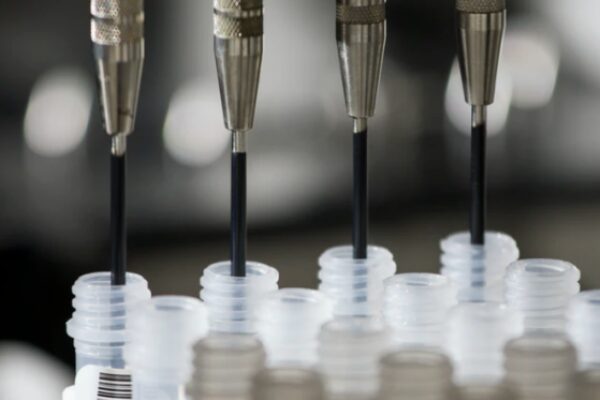
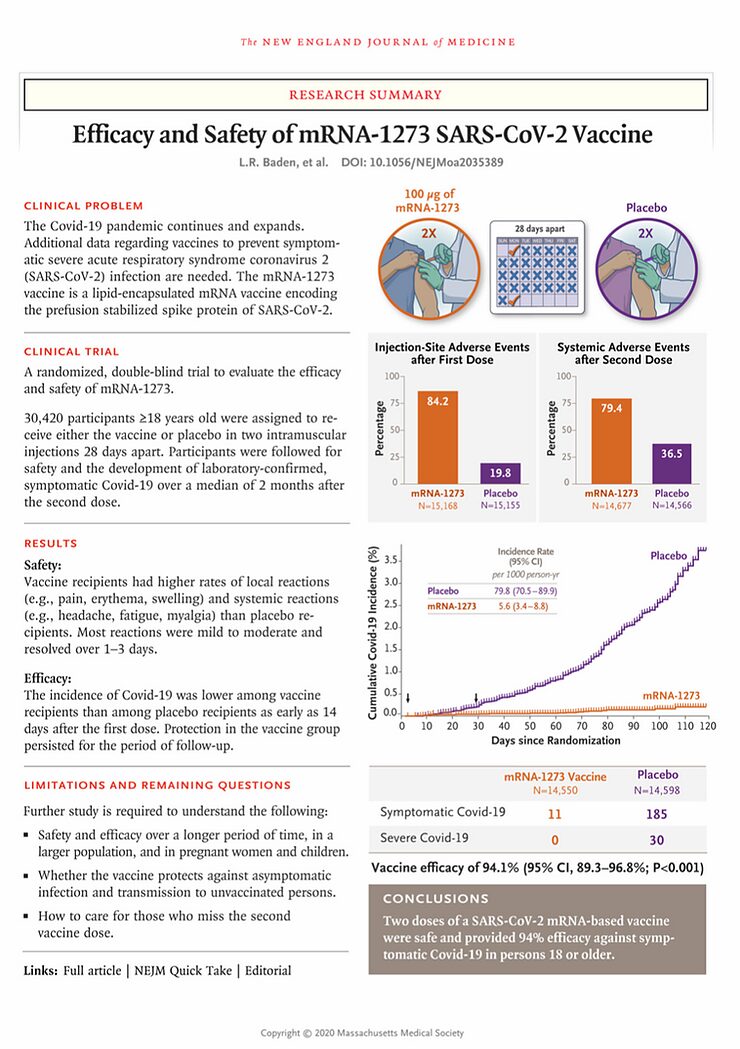
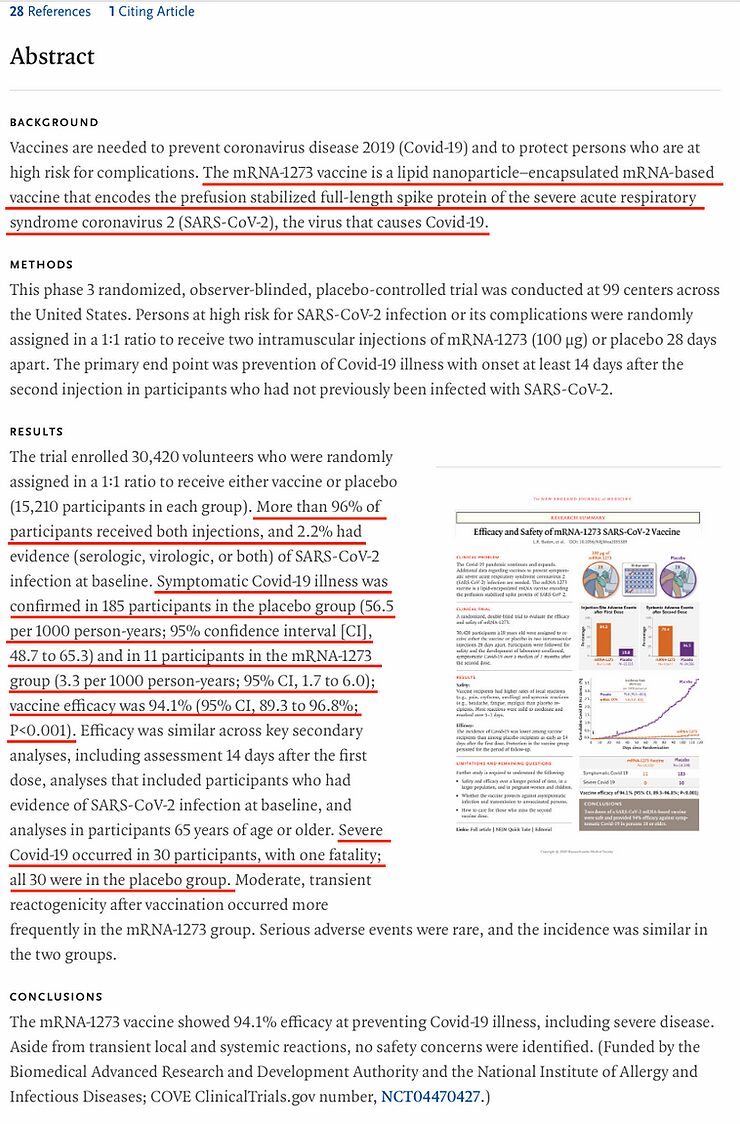
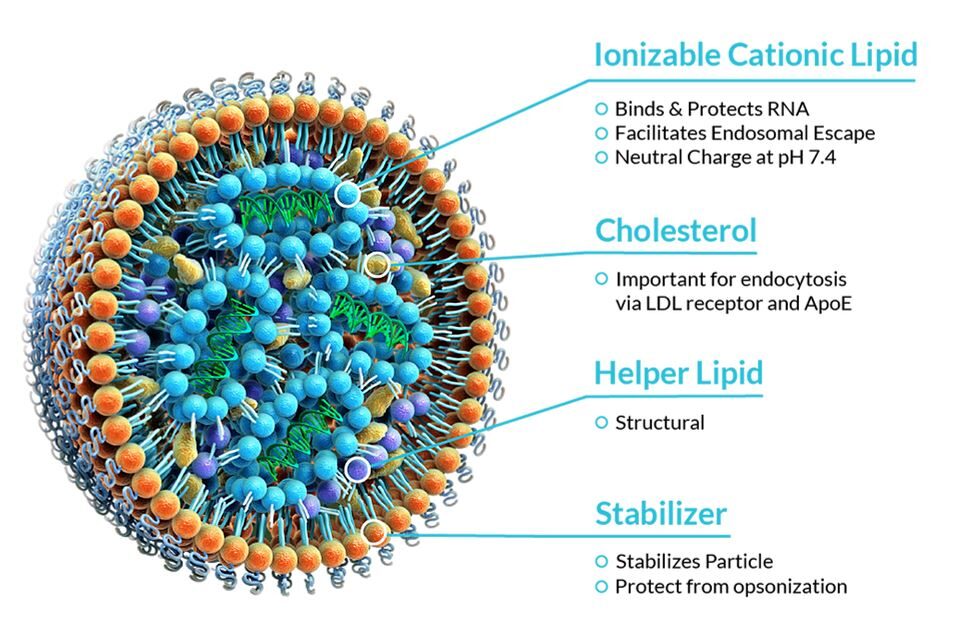
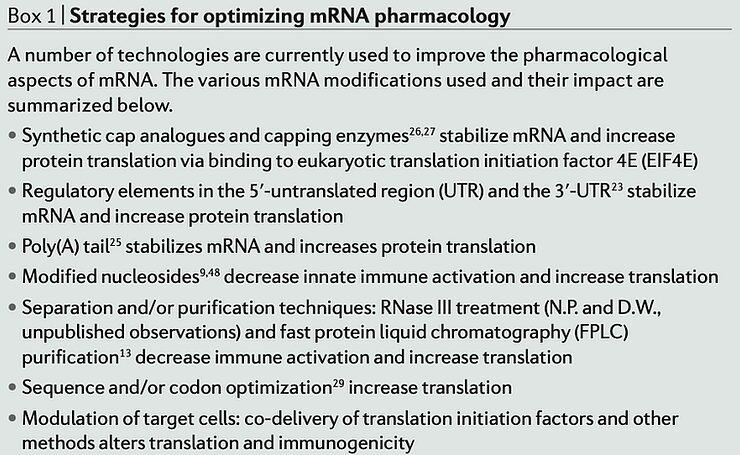
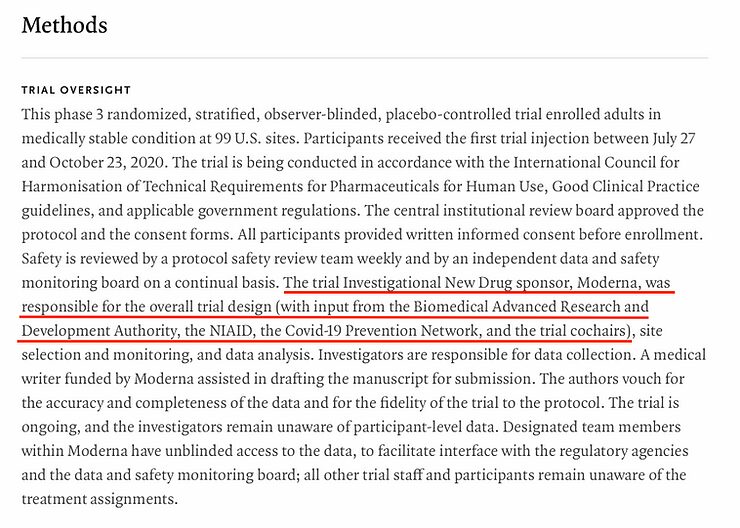
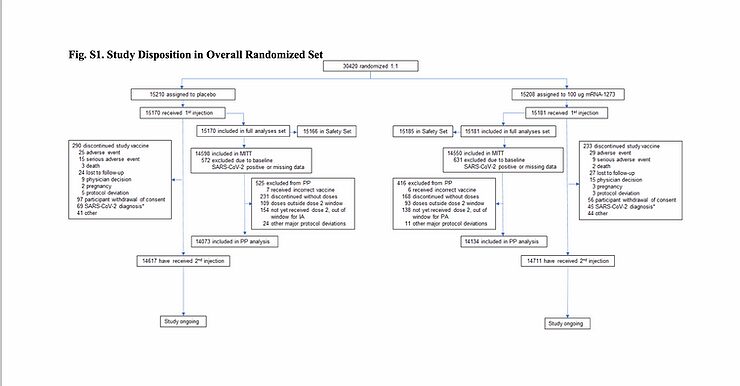
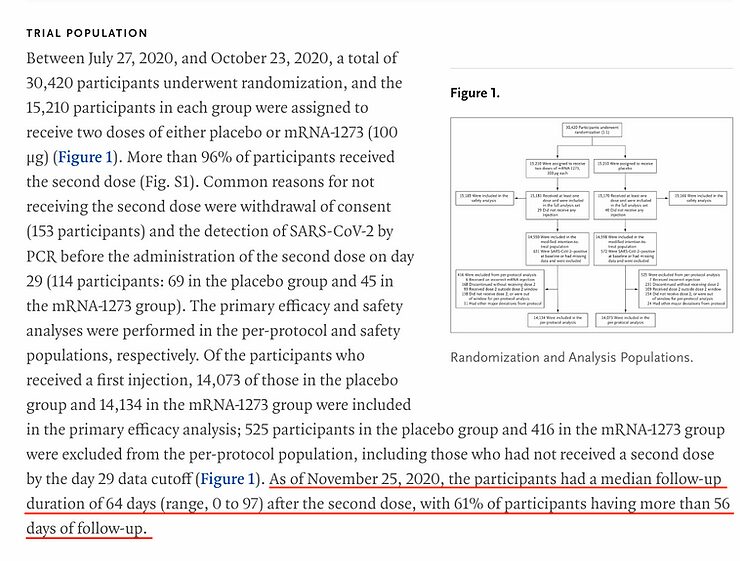
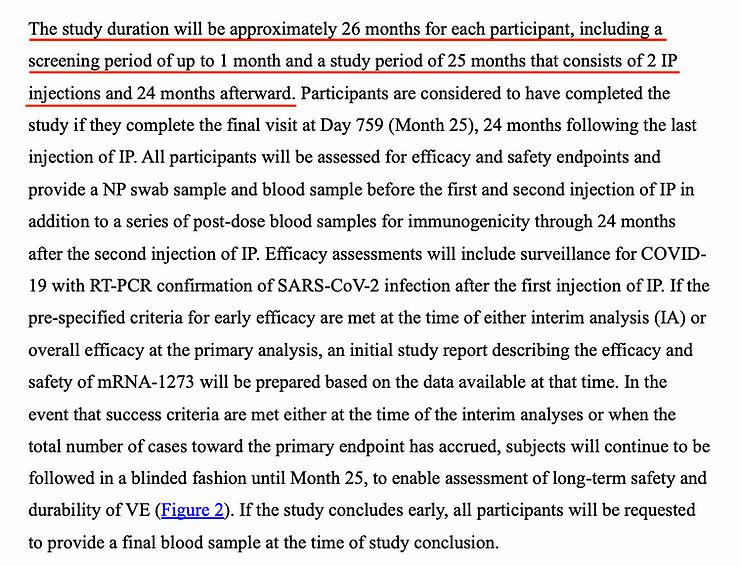
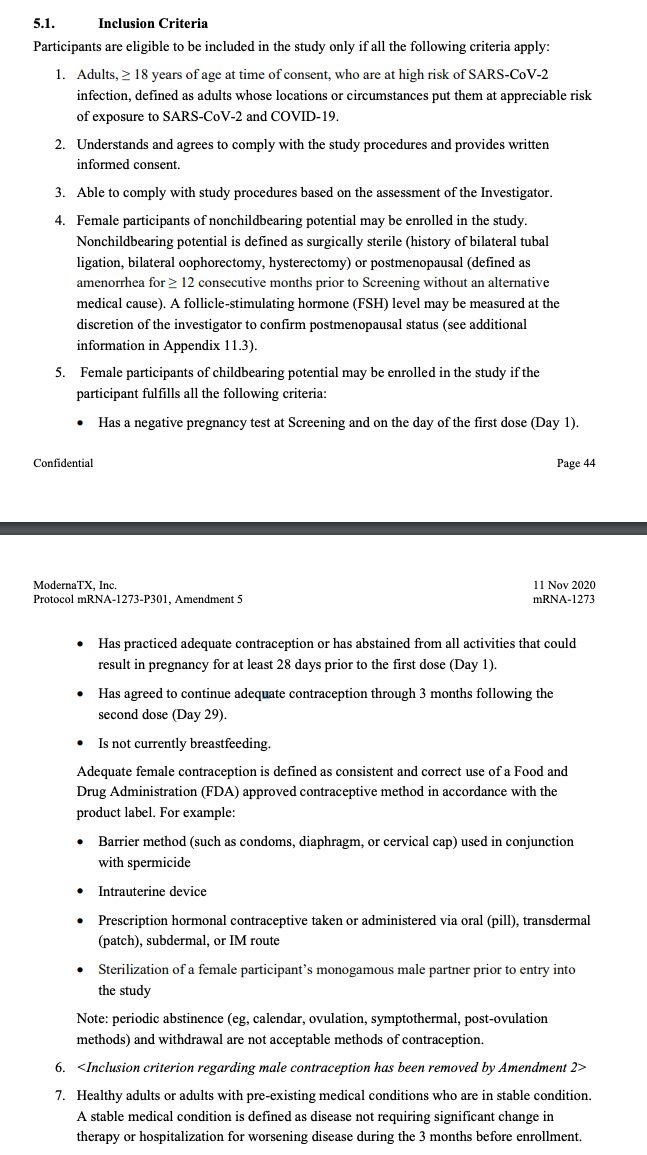
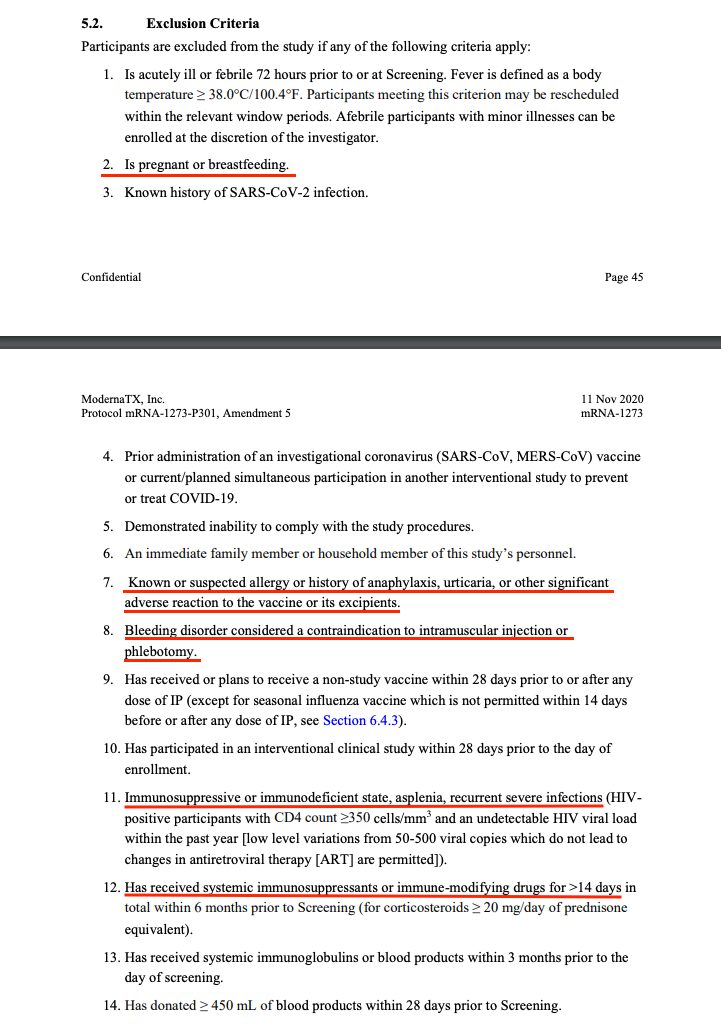
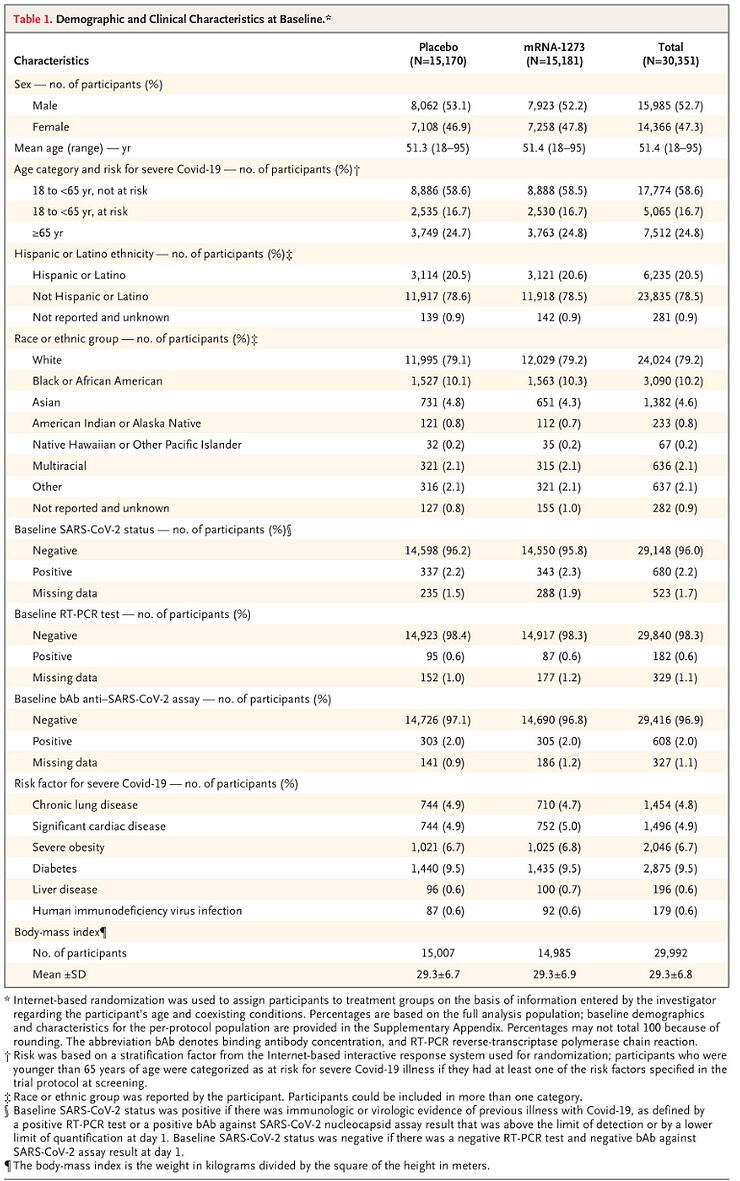
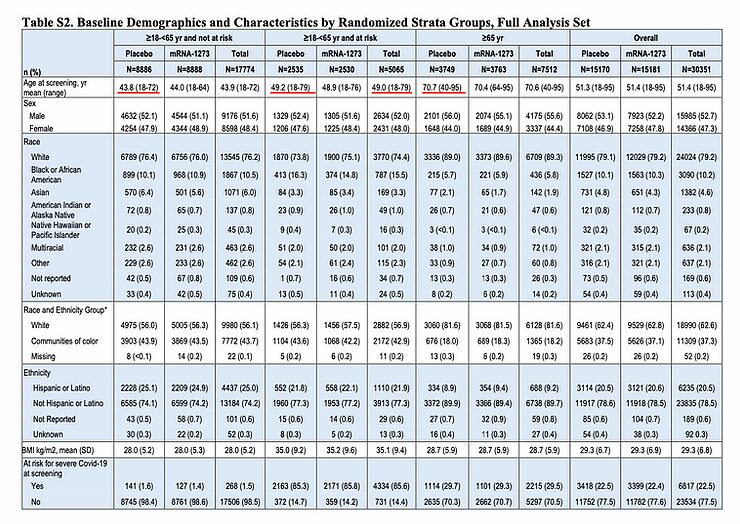
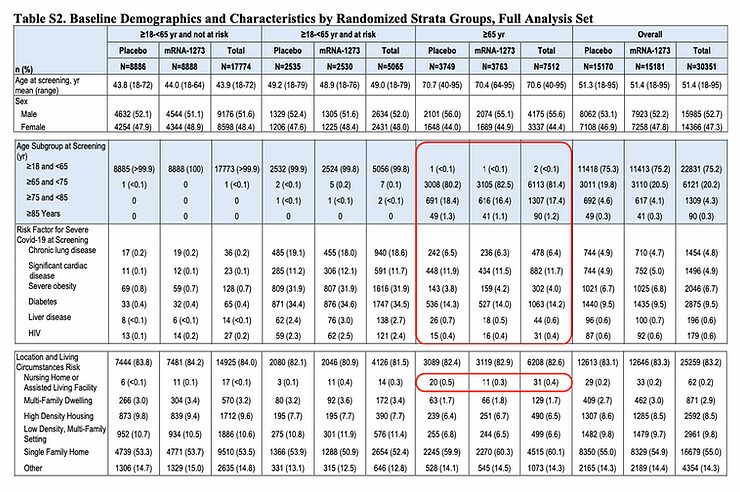
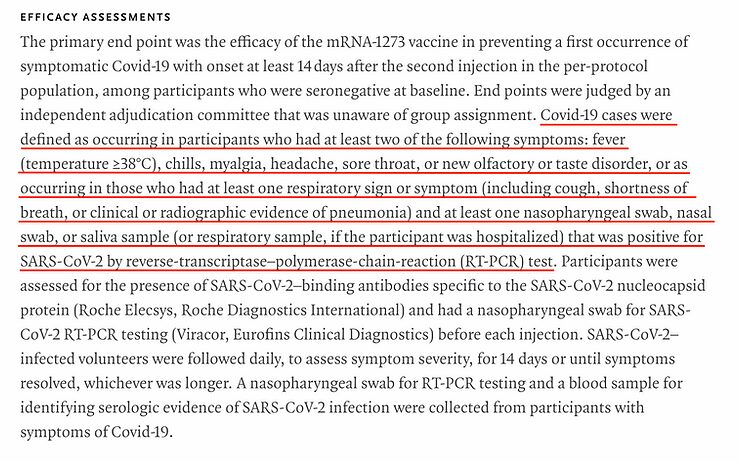
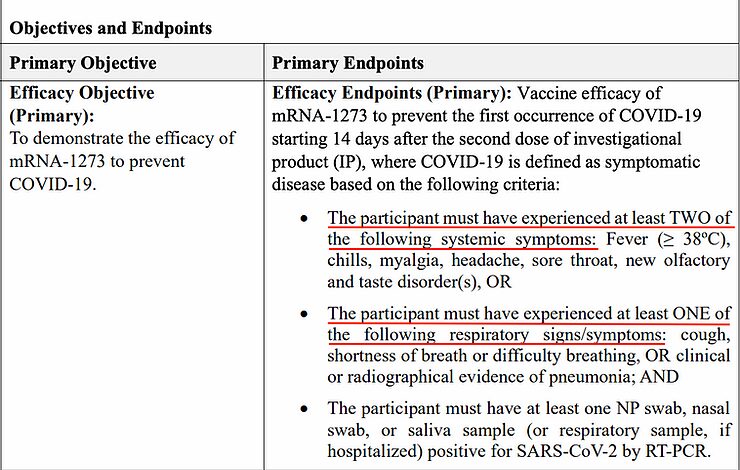
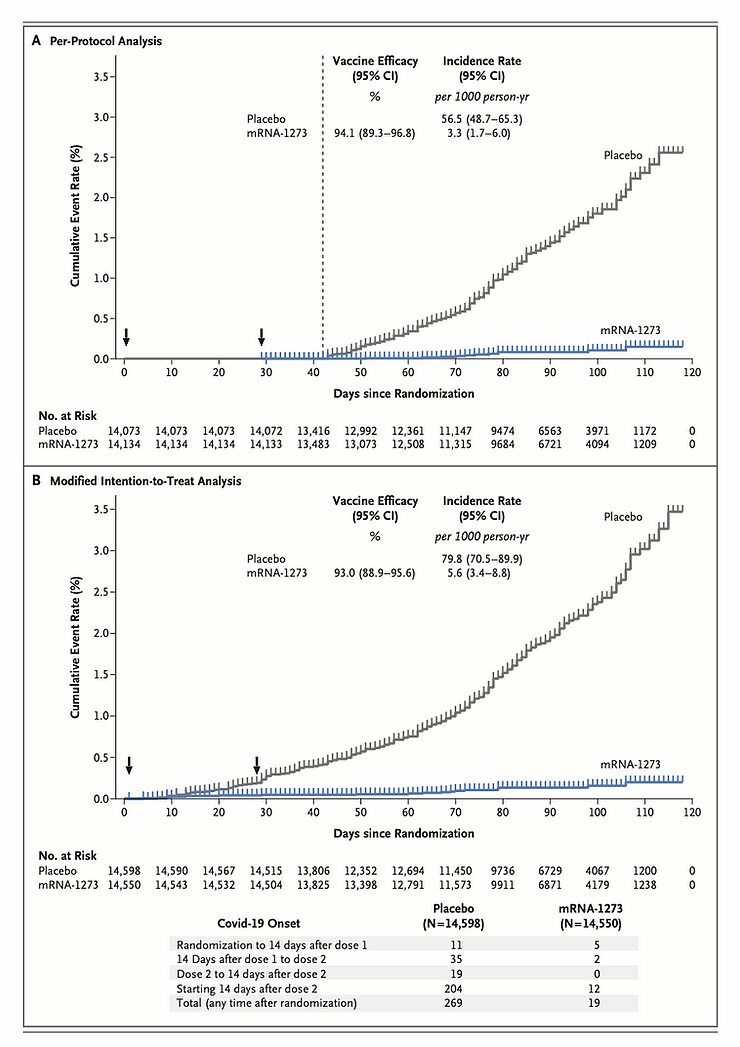
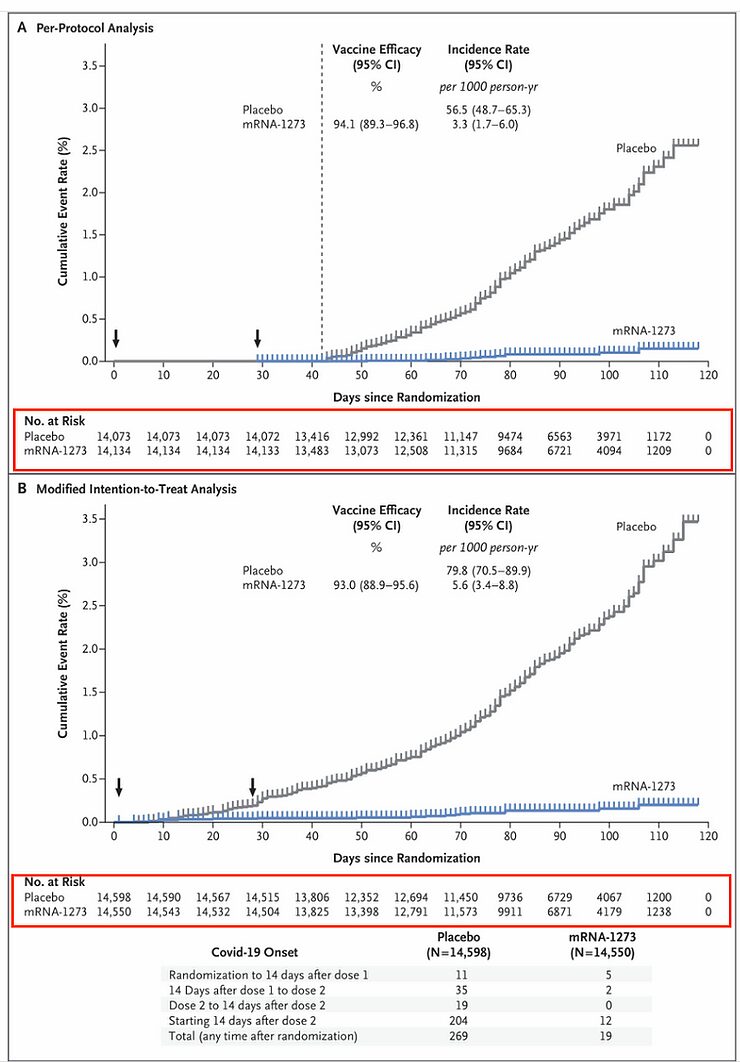
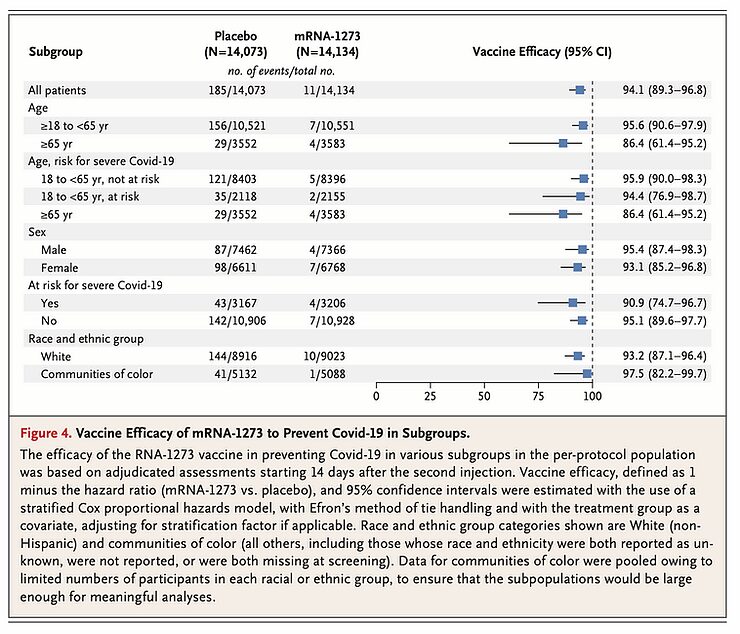
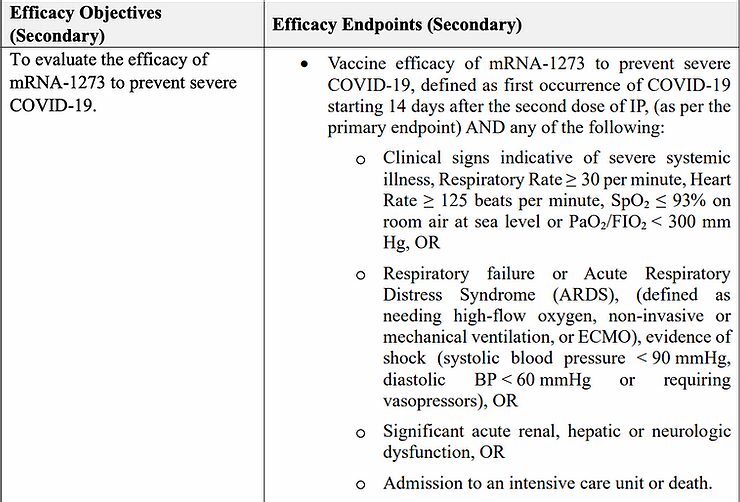
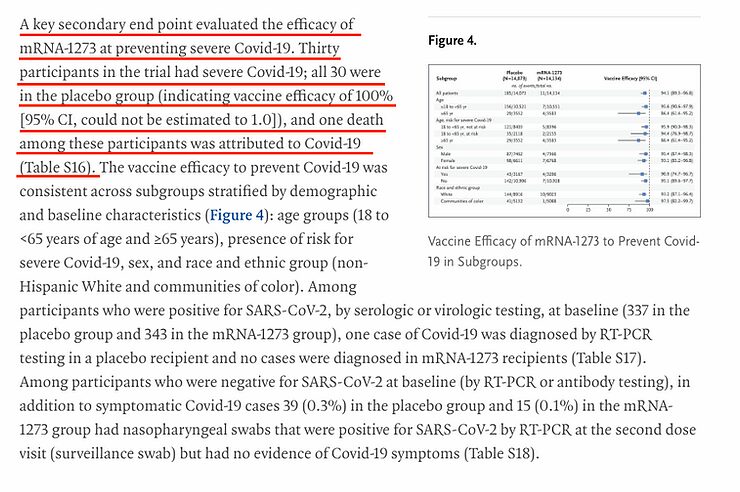
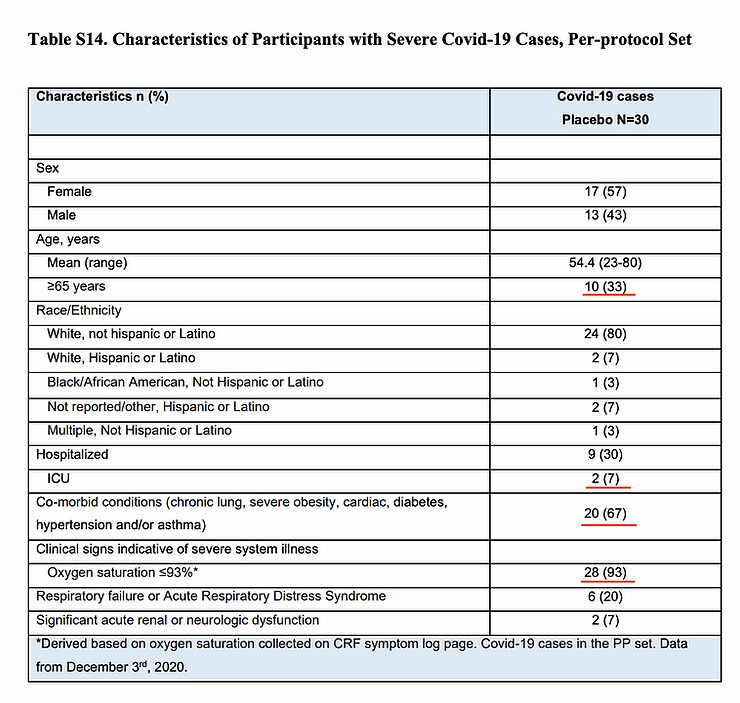
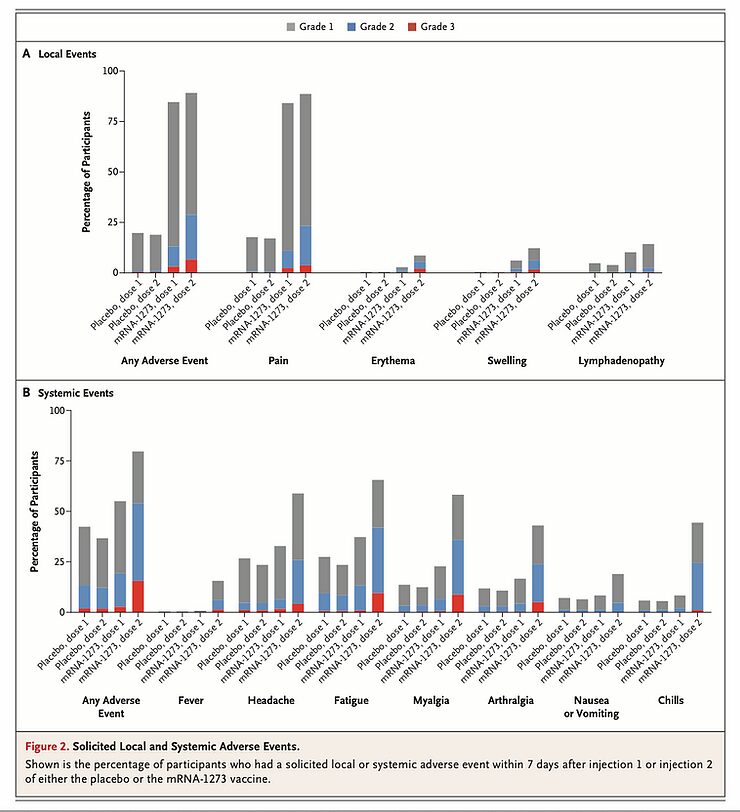
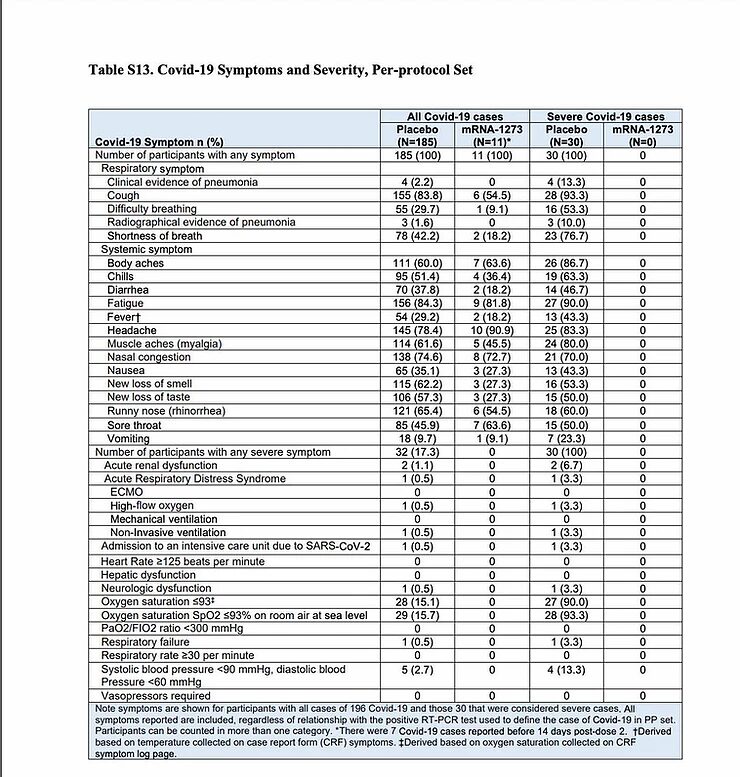

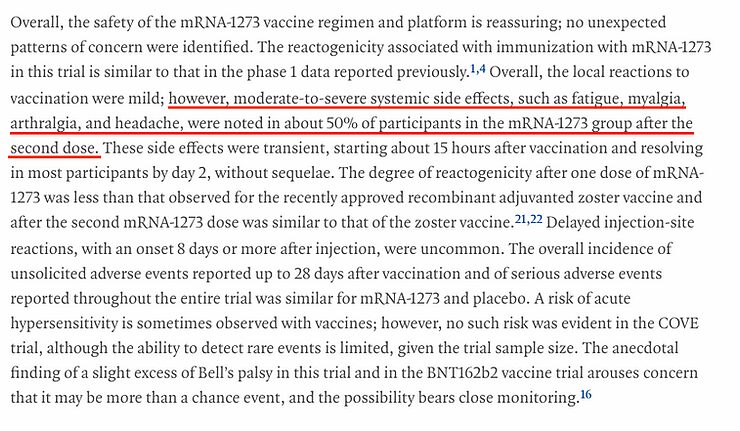
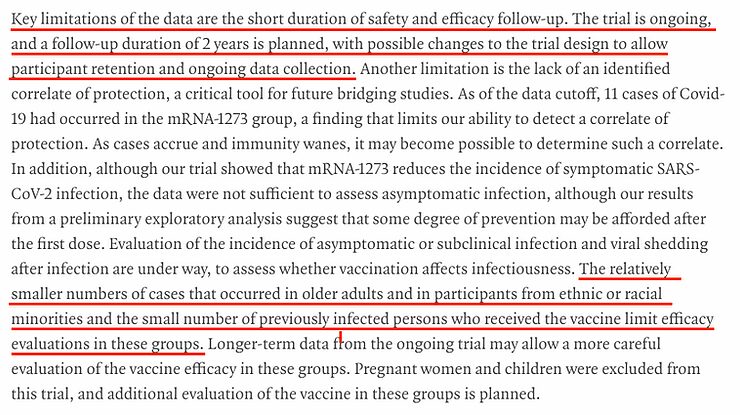
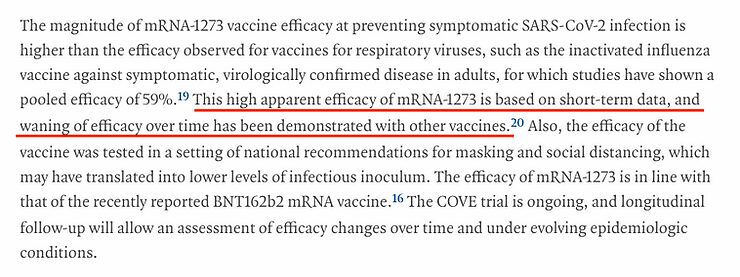



Reader Comments
RC
More probably willful deception. Another very restrained assessment ...
As mentioned, I am not convinced in the solely financial motive.
As much as I understand, the Trojan Horse Effect, that not only pulls the virus into the cells, but might even help him cross the Blood-Brain-Barrier (BBB) to enter our central nervous system is an inevitable effect and will cause deaths. I wouldn´t even call it a SIDE-effect. Interestingly the vaccinated animals (against SARS CoV-1) had developed an immunopathology, when confronted with the virus. they died. [Link]
and now, during the animal trials of Pfizer (I don´t know how Moderna did this), the animals were tested for antibodies, but then quickly, after seven days, killed. no further data available about later adverse effects.
In this video from minute 12:00 on Dr. Tenpenny explains the three risks of the mRNA vaccine in a very comprehensible way. the window for these effects is from day 42 after vaccination to one year. [Link]
In the end we are playing with something, we do not know much about. Why do they do this?
1. identify those, who don´t take the vaccine as potential rebels, as enemies of the state, then stigmatize them and at last elimiate them from society. very interesting, also [Link] Not killing us, but excluding us from electricity, water, internet, banking, consume... just like the famous WEF-article about 2030 promises: "Those who got upset with the political system and turned against it. They live different kind of lives outside of the city. Some have formed little self-supplying communities. Others just stayed in the empty and abandoned houses in small 19th century villages." [Link]
2. this is the first time, that genetics meet our body. the first cut is the deepest, we know. next time, the opposition will be much tamer, and Schwab is a big fan of the "Borg".
Don't try to fix a working system.
Nag Hammadi library, Gospel of Thomas:
“His disciples said to him: Is circumcision profitable or not? He said to them: Were it profitable, their father would beget them from their mother circumcised.
This patent filed in the Netherlands by the same R. Rothchild includes a US patent dated 2015 for:
"A method is provided for acquiring and transmitting biometric data (e.g., vital signs) of a user, where the data is analyzed to determine whether the user is suffering from a viral infection, such as COVID-19. The method includes using a pulse oximeter to acquire at least pulse and blood oxygen saturation percentage, which is transmitted wirelessly to a smartphone. To ensure that the data is accurate, an accelerometer within the smartphone is used to measure movement of the smartphone and/or the user. Once accurate data is acquired, it is uploaded to the cloud (or host), where the data is used (alone or together with other vital signs) to determine whether the user is suffering from (or likely to suffer from) a viral infection, such as COVID-19. Depending on the specific requirements, the data, changes thereto, and/or the determination can be used to alert medical staff and take corresponding actions." [Link]
(some suggest covid-19 have killed more americans than wwii - but then, did wwii really happen?)
RC
i am here to learn, but being critical at the same time.
i find joy in trying to develop
Stay strong no no matter what comes.
When is the invasion coming? To what extent do they wanna make us crippled? Will they dare to invade, when the Deep State sprayed us with some potent pesticide, so we'll lie on our backs with our limbs waving helplessly before their eyes?
So, you want to be tagged, tracked and owned inorder to "protect" you from something that has a 99% survival rate if infected?
[Link]
Lincoln gives us... The Judas Goat..
[Link]
[Link]
The judas goat is around 53 minutes.
____
Tanzanian President Says Citizens Will Not Be Guinea Pigs in COVID Vaccine Trials
[Link]
RC